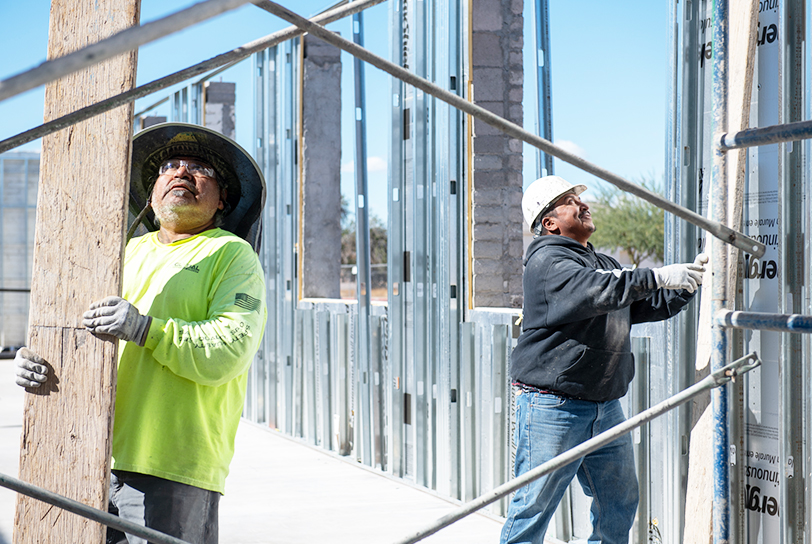VIEWS: 3300
August 1, 2023What Do SRPMIC Wild Horses Eat?
Hours before one of the hottest days on record in the Valley, Brian Gewecke, senior environmental specialist (Range Management) for the Salt River Pima-Maricopa Indian Community, maneuvered his truck through the rough terrain of the range at first light.
With his truck full of alfalfa bales, Gewecke passed by wiry creosote branches that danced with the warm summer breeze. He peered out into the distance.
“They’ll be here unless something disrupted their pattern,” he said.
“There isn’t a horse alive that can add one plus one. Their intelligence is measured in their memory, so I have this routine out here with the treats. ‘The ice cream truck is here!’ And you’ll see a big cloud of dust as they’re moving in.”

And that they did. What looked like one or two horses in the distance slowly dissolved into an entire herd as the dust settled. Leaning against the truck, you can feel a slight rumbling as the horses approach.
Up close, Gewecke can look over the horses while they’re snacking to see who’s getting old, who just had a foal or who might be pregnant.
He tosses one bale of alfalfa hay on the ground per 40 horses. The hay comes from Associated Farms, a farming company operating on leased SRPMIC land.

Besides the snack, Gewecke said that the horses must survive on the available forage provided by the environment.
“Wild animals that can’t survive in the wild will weaken and die,” he said.
The Community’s wild horses are descendants of the Spanish barb horses that arrived in the Americas with the Spanish conquistadors in the mid-1500s. Some of them ended up here in the Sonoran Desert. How they survived and thrived here is up for debate, but the Verde and Salt rivers provided water and foliage nearby.
Foals will survive on their mothers’ milk usually until they can properly chew solids when their teeth come in, and in some cases foals can continue to nurse through the first year of life or more on the range. But after that the food options are limited in the desert.
The range is made up of several natural grasses, such as Mediterranean grass (Schismus barbatus), that the horses will eat throughout the day. Mediterranean grass is not a native grass, but it occurs throughout the deserts of the Southwest.


The horses won’t touch creosote, but they can eat and digest mesquite pods, which are a higher source of protein compared with the dead grass on the range. Mesquite beans are rich in calcium, potassium, magnesium, iron and zinc. The seeds are too hard for the horses to digest, and they will come out mostly intact in their manure.
Gewecke explained that when a horse’s stomach is two-thirds full, it will start to empty and be expelled as manure. A tame barn horse will eat large meals two or three times a day, which means they will expel food that hasn’t been digested completely. Wild horses don’t get large amounts of food at one time.
“[Wild horses] are constantly eating a bite, walking a bit and eating another bite. That means their stomach doesn’t fill up as fast or as much. When a wild horse expels manure, it’s been in the body long enough to be completely digested.”
Horses need food that contains 8% to 10% protein. Pregnant, lactating and growing horses will do better with about 16% protein in their diet, according to Gewecke.
Typically, winter rains provide the forage on the range. The summer monsoon rains can be substantial, but Gewecke said that the 100-plus-degree summer heat the day after a rain doesn’t allow the seeds to germinate and grow.
“They burn up on the ground before they even get started,” said Gewecke.
The Community’s herds rotate from range to range, consuming the grass. The horses then move on to the next water and food source, repeating the cycle the next season.
















